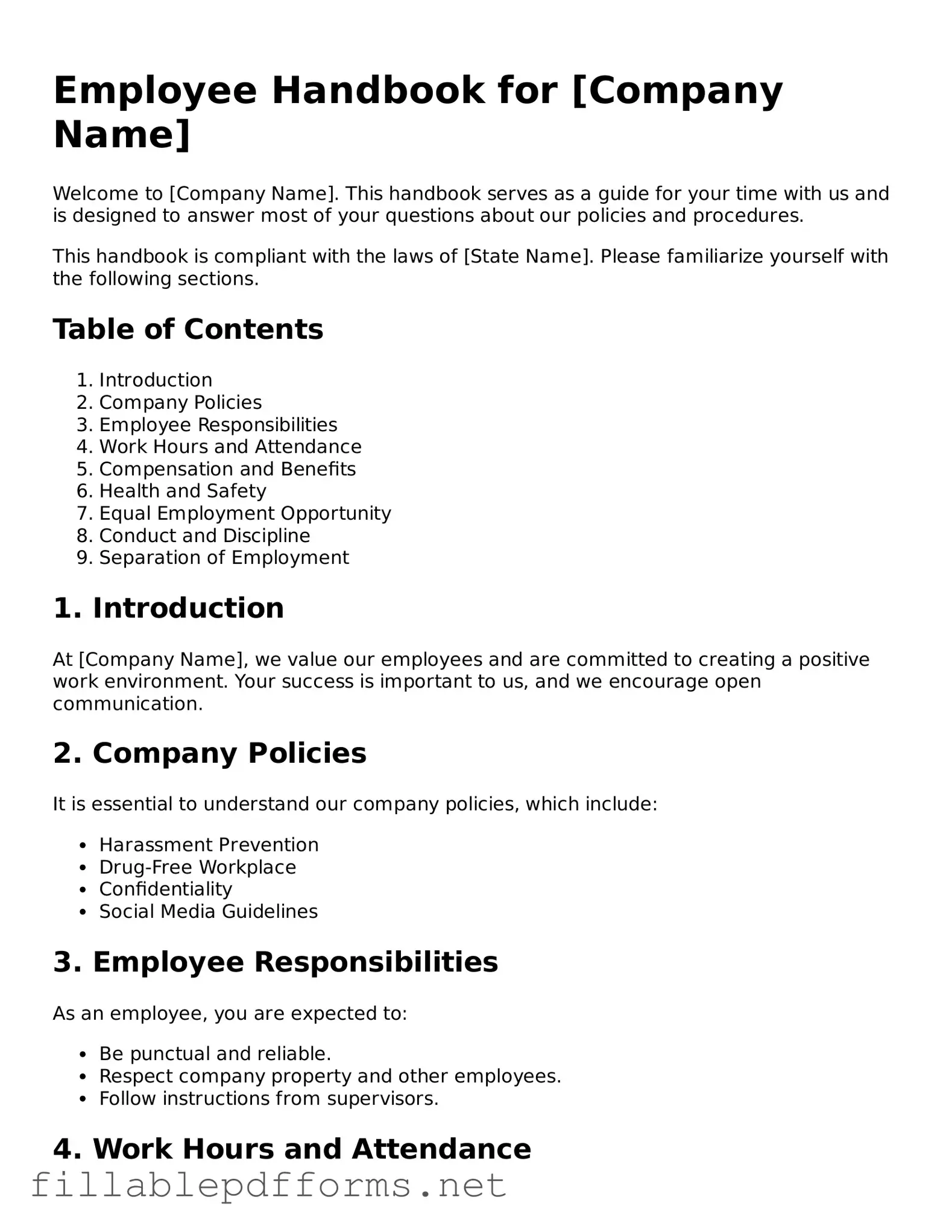Blank Employee Handbook Template
An Employee Handbook is a vital document that outlines an organization’s policies, procedures, and expectations for its employees. This handbook serves as a guide, helping to ensure that everyone is on the same page regarding workplace standards and practices. By providing clear information, it fosters a positive work environment and promotes compliance with applicable laws and regulations.
Launch Editor Here
